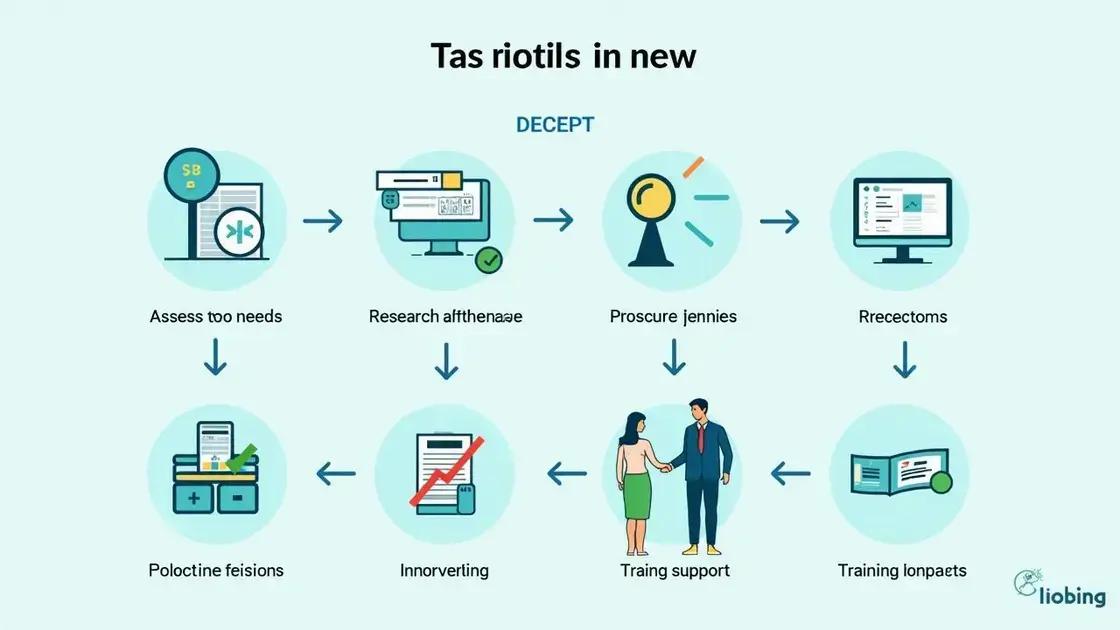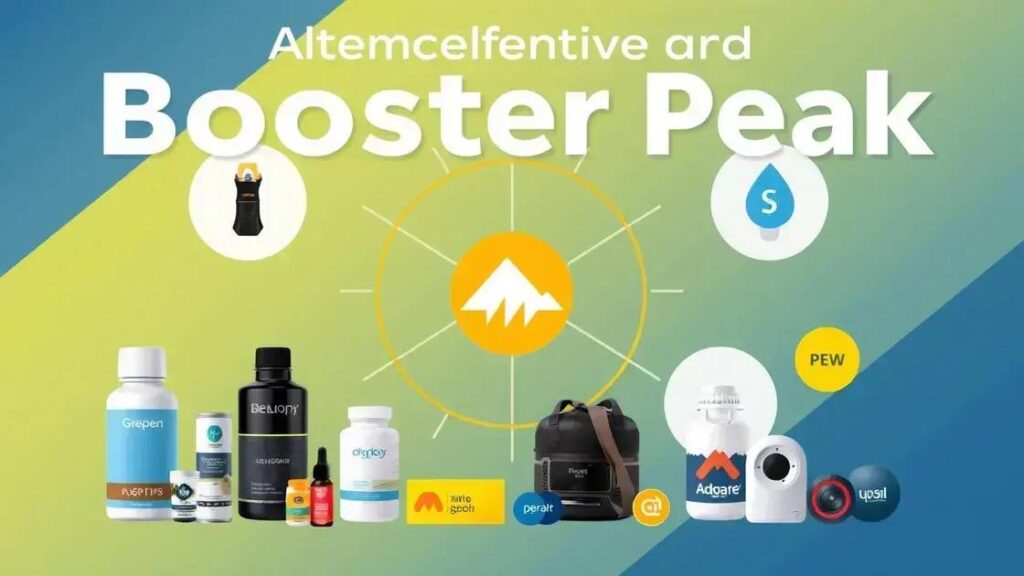Are there alternatives to Booster Peak? Yes, popular alternatives like Peak Performer, Turbo Boost, Speed Master, and Performance Guru offer similar functionalities with varying features, benefits, and pricing, making them suitable options for users looking for enhanced support and flexibility.
Are there alternatives to Booster Peak? If you’re exploring options for enhancing your performance and reaching new heights, you’re not alone. Many users look for alternatives that can offer equal or greater effectiveness. This article delves into various alternatives available in the market, comparing their features, benefits, and how they can support your needs. We’ll explore the most popular choices, their advantages, and provide guidance on transitioning to these solutions for optimal results.
Understanding Booster Peak

Understanding Booster Peak is essential for anyone considering their options for performance enhancement. Booster Peak is a solution designed to provide users with better support, especially when facing challenges in various environments. Many individuals rely on it to achieve their goals efficiently.
This tool works by integrating seamlessly into your existing systems, offering a range of functionalities such as improved connectivity and enhanced data management. Its design aims to address common issues faced by users, such as latency and synchronization problems, which can hinder performance.
Features of Booster Peak
Some key features include:
- High-speed performance: Booster Peak is built to optimize speed, allowing users to complete tasks more quickly.
- Customizable settings: Users can adjust preferences to better suit their individual needs, making it a versatile tool.
- User-friendly interface: The intuitive design simplifies navigation, making it accessible even for beginners.
Understanding these features can help you evaluate if Booster Peak meets your expectations. However, it’s important to consider all available options in your search for the best support.
Challenges with Booster Peak
While Booster Peak offers many advantages, there are some challenges users may encounter. These can range from occasional technical issues to the necessity for updates. Being aware of these potential downsides allows users to make informed decisions when seeking alternatives.
Popular Alternatives to Booster Peak

When considering alternatives to Booster Peak, several popular options are worth exploring. These solutions offer similar functionalities while catering to different user needs.
1. Peak Performer
Peak Performer is well-known for its robust performance enhancement features. It combines speed and reliability, making it a favorite among professionals looking to improve their workflow. With customizable settings, users can tailor the experience to fit their specific requirements.
2. Turbo Boost
Turbo Boost is another strong contender in this space. This tool focuses on maximizing efficiency and speed, and it is particularly effective in high-demand environments. Users appreciate its straightforward interface and powerful analytics capabilities, which help track performance improvements.
3. Speed Master
Speed Master stands out for its user-friendly design and exceptional support. It offers features that facilitate better data management and connectivity, similar to Booster Peak. Many users have noted improvements in their daily tasks and communications when using Speed Master.
4. Performance Guru
Finally, there’s Performance Guru, renowned for its advanced analytics. This alternative helps users identify bottlenecks in their processes and optimize them effectively. The tailored reporting features allow for a detailed view of improvements over time, making it a great option for users serious about monitoring their progress.
Each of these alternatives presents unique features and benefits. By exploring them, users can find the solution that best suits their specific needs.
Benefits of Choosing Alternatives

Choosing alternatives to Booster Peak comes with several benefits that can enhance your overall experience. Here are some key advantages you may enjoy:
1. Enhanced Flexibility
Many alternatives provide customizable options that allow users to tailor the solution to their specific needs. This flexibility can lead to better performance and productivity.
2. Cost-Effectiveness
Some alternatives may be more affordable than Booster Peak. These cost savings can be important, especially for individuals or small businesses looking to optimize their budgets without compromising quality.
3. Improved User Support
Choosing alternatives often leads to better customer service and user support. Many providers place a strong emphasis on assisting their clients, ensuring that technical issues are resolved quickly and effectively.
4. Access to New Features
Alternatives often come with innovative features that may not be available in Booster Peak. By exploring these options, users can take advantage of the latest advancements in technology.
5. Better Scalability
Some alternatives offer scalability options that allow for growth. This means that as your needs evolve, the tool can adapt, making it easier to manage increasing demands without changing the platform.
Considering these benefits makes it clear why users may want to explore alternatives to Booster Peak. By evaluating these options, you can make an informed choice that enhances your support experience.
How to Transition to a New Solution

Transitioning to a new solution can seem challenging, but following a structured approach makes the process smoother. Here are steps to guide you through it:
1. Assess Your Current Needs
Begin by understanding what you need from a new solution. Identify the features that are critical for your work and any shortcomings you face with Booster Peak. This step ensures you choose an alternative that meets your specific requirements.
2. Research Alternatives
Explore different options available in the market. Make a list of popular alternatives to Booster Peak, such as Peak Performer, Turbo Boost, Speed Master, and Performance Guru. Check reviews, compare features, and evaluate how each option aligns with your needs.
3. Plan the Transition
Once you’ve chosen a new solution, create a detailed plan for transitioning. Assign team members to specific tasks and set timelines to ensure a smooth migration. It’s important to prepare for any potential disruptions during the change.
4. Backup Data
Before making any significant changes, backup all relevant data from Booster Peak. This ensures that you don’t lose any important information during the transition. Retaining your data helps maintain continuity and allows for easier troubleshooting.
5. Training and Support
Invest time in training users on the new platform. Familiarizing your team with the interface and features of the new solution will aid in faster adaptation. Don’t hesitate to utilize customer support services provided by the new tool for extra help.
6. Monitor Performance
After the transition, monitor how well the new solution is working for you. Keep track of performance metrics and user feedback to determine if it meets your expectations. This ongoing evaluation helps to address issues quickly, ensuring that the new solution effectively meets your needs.
Wrapping Up: Exploring Alternatives to Booster Peak
In conclusion, understanding your options is crucial when seeking support solutions. Exploring alternatives to Booster Peak can unveil several tools that offer enhanced performance, flexibility, and support tailored to your specific needs.
The benefits of choosing alternatives include greater cost effectiveness, innovative features, and improved user experiences. Transitioning to a new solution may seem daunting, but with a clear plan and proper training, you can make the shift successfully.
As you evaluate the available options and take action, remember that the right choice will contribute to your success and help you achieve your goals more efficiently.
FAQ – Frequently Asked Questions About Alternatives to Booster Peak
What are some popular alternatives to Booster Peak?
Some popular alternatives include Peak Performer, Turbo Boost, Speed Master, and Performance Guru, each offering unique features and benefits.
How do I choose the best alternative for my needs?
Assess your current needs, research options, compare features, and consider factors like cost and user support to find the best fit.
What are the benefits of switching from Booster Peak to an alternative?
Benefits may include enhanced flexibility, cost-effectiveness, improved user support, and access to new features that may better serve your needs.
What steps should I take to transition to a new solution?
Begin by assessing your needs, researching alternatives, planning the transition, backing up data, providing training, and monitoring performance after the switch.
Will there be any disruptions during the transition?
While some disruption is possible, careful planning and communication can help minimize any issues during the transition process.
How can I ensure my team adapts to the new solution quickly?
Invest in training sessions, provide resources for learning, and encourage user feedback to help everyone become comfortable with the new platform.












